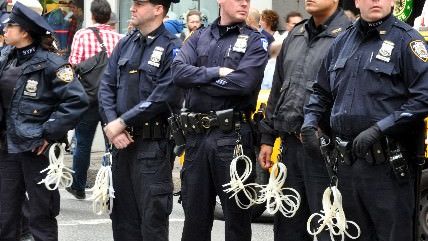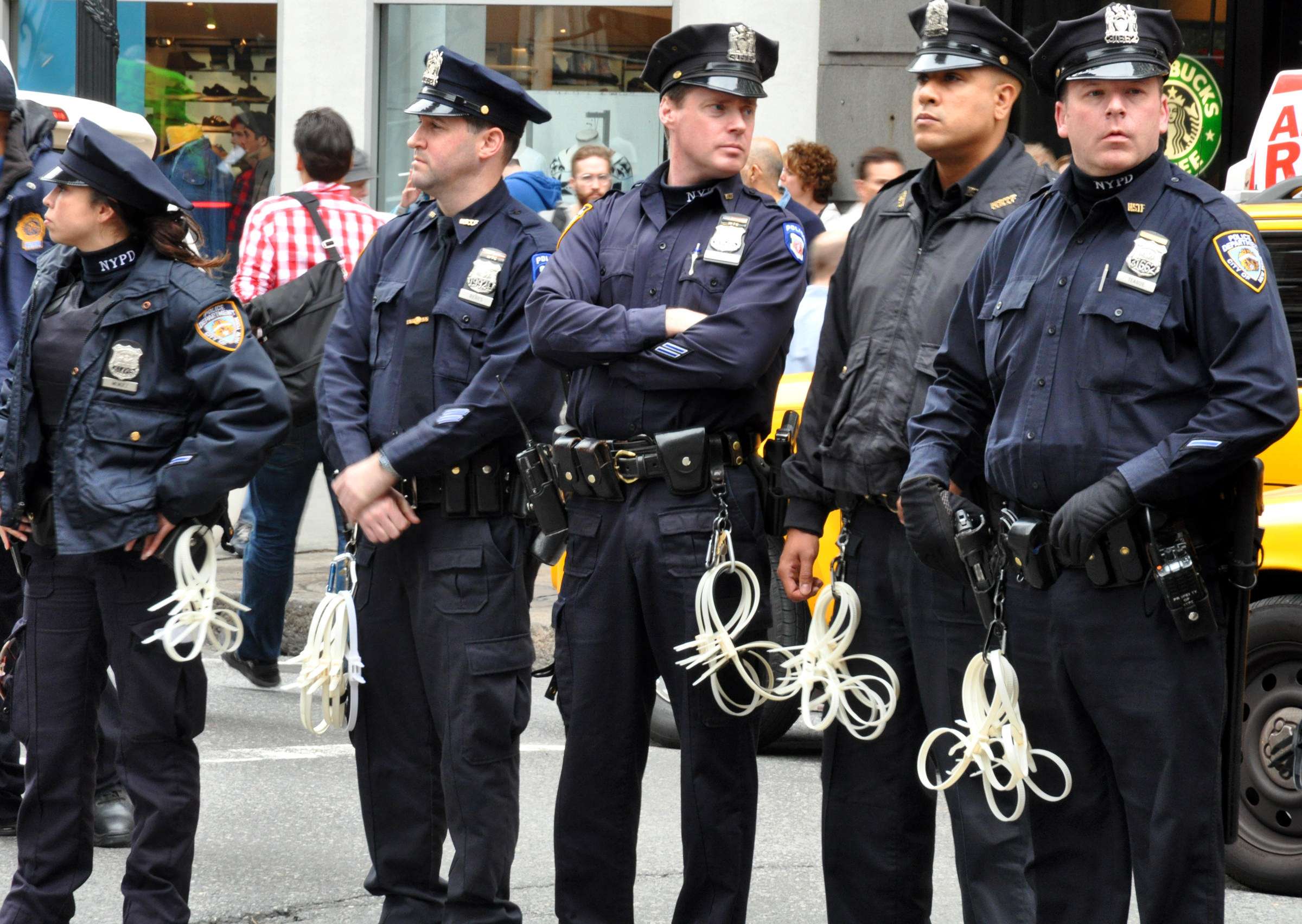NYPD To Document Nearly All Instances of Force
Commissioner Bratton says new database could become "national template" for police transparency.

Is a new era of transparency in policing upon us?

Perhaps, if Commissioner William J. Bratton's suggestion that the NYPD's newly announced system, which mandates the documentation of almost any use of force by its officers, becomes a "national template" for other police departments.
The New York Times reports:
Every police officer will have to detail virtually every instance when force is used not only in an arrest but also in other encounters with the public, including the sort of brief, violent detention and release that occurs routinely on the street and, in the case of the retired tennis star James Blake, is captured on video.
Officers, who have long been required to intervene when they see other officers using excessive force, will now face formal discipline, up to and including dismissal, not only if they fail to step in or report excessive force, but also if they also fail to seek medical assistance for someone who requests it.
The new policy comes in the wake of a tumultuous year where the killings of unarmed black men (and boys) in New York City and around the country have led to a brighter spotlight shone on police officers' use of force. And while the NYPD has "meticulously studied" every single bullet fired by its officers for decades, they will now also study "far more routine episodes of force — baton blows, physical altercations, mace spraying, takedowns — that erupt in an instant on the street."
Bratton admitted that by only focusing on gunshots, the department was left with "a hole in our data":
Many of the everyday rough encounters between officers and civilians, which rankle observers but that Mr. Bratton has called "awful but lawful," are not presently documented. Officers can note force on forms filed for an arrest, but not after hundreds of thousands of other interactions, including car stops, criminal summonses and dealings with emotionally disturbed people…
By more closely tracking every physical encounter, including by race, and requiring officers to justify their actions, police officials expect that the new data will capture an increased number of forcible episodes. But they also expect that those encounters will be better understood.
While the new system, expected to be implemented in early 2016, will allow for a greater analysis of how, why, and where officers use force, there will still be holes in the data. For example, if an officer pushes a citizen against a wall, they are under no obligation to document that as force. In a situation where a detained individual who is not under arrest becomes less than cooperative, the appropriate level of force hovers in a gray area.
This new push for transparency and conditioning officers to de-escalate potentially volatile situations comes just days after the NYPD introduced "Stop and Frisk tickets," essentially a receipt explaining why an officer stopped a person but did not arrest them.
Not everyone is on board with the increased scrutiny on police. The New York Daily News reports:
Patrick Lynch, head of the largest NYPD union, the Patrolmen's Benevolent Association (PBA), called the new paperwork "another nail in the coffin of proactive policing."
Reason reached out to the PBA for comment on the new policy regarding use of force reporting. We will update if/when they respond.
In late 2014, Reason TV reported from a pro-NYPD rally held after massive protests critical of the NYPD erupted all over New York City following the non-indictment of Officer Daniel Pantaleo in the death of Eric Garner.
Watch below:


Show Comments (78)